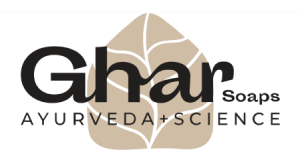As you know, SEO organically helps businesses grow and internal links play an important role in attracting traffic to websites, boosting rankings and visibility, pushing business owners to focus and enhancing a user’s experience.
If you begin to believe that SEO is smooth sailing and nothing can come in the way of businesses increasing online visibility – think again. Enter 0 search! Zero-click search is a rising challenge in the SEO landscape. But don’t worry, in this blog, we will share a complete understanding of zero-click marketing and share tips that will help businesses adapt to this peril and help turn obstacles into opportunities.
Definition of zero-click searches:
Firstly, let us understand zero-click searches with a simple example. Imagine you want to search for something – content, a product, or even something as simple as the weather of your city. You conduct a Google search and immediately find the relevant information on the search engine results page (SERP), without having to click a website. This is a zero-click search.

In case you are wondering what happens, well, Google picks up the information from third-party sources and instantaneously dishes it out for the searcher. This is a great experience for users but not an ideal scenario for business websites.
Also read: How to create user-first content.
Why Are zero-click searches increasing?
I am sure the next question on your mind would be why zero-click searching is increasing. Blame it on Google! Their ever-expanding and cutting-edge toolbox of search features like AI overviews and featured snippets – enables them to instantly answer millions of questions, giving users all they need on a silver platter, saving them from the time and energy of having to go through multiple websites or read unnecessary material. It saves users’ time and effort.
The impact of zero-click searches on SEO:
Getting what you are looking for without too much effort is an amazing experience for the user. However, it is not a great scenario for official websites. With the growing usage of zero-click searches, official websites face the following challenges:
- They are deprived of attracting incoming traffic,
- This results in less advertising revenue,
- There are fewer opportunities for purchasing conversions,
- building relationships with potential customers.
Well, we cannot solely blame Google for diverting the traffic through zero-click search and its lingering impact on businesses’ official websites. The user’s inclination also plays a pivotal role. Nowadays, users look for content on social media platforms, or on AI tools or YouTube. Did you know YouTube is the second-largest search engine in the world? If users are looking to buy products, they prefer searching on Amazon, Myntra, and other e-commerce websites rather than visiting the company’s official website.
It is rightly said that ‘the customer is the king’ – zero-click searches and third party e-commerce platforms definitely give the leverage to the users to discover what they are looking for with absolute ease. But, it also means that businesses will have to push themselves to get traffic back to their websites.
Also Read: 25 Reasons Why Your Website is Not Ranking.
Strategies to Handle Zero-click Searches:
If you have been following along, you now understand how zero-click searches provide direct answers on SERPs, leading to a decline in Click-Through Rates (CTR). This results in reduced website traffic, fewer leads, and lower sales for businesses that once relied on organic search.
Let us now take a look at a few strategies to handle zero-click searches:
Increase Engagement With Customers: Keep a constant connection with customers, it could be through fliers, email campaigns, interactive Q&As etc. Offer and urge them to visit your website directly. Ask them to share reviews and ratings to reduce reliance on Google search.
Build Strong Brand Presence: You will need to work towards building a strong brand appearance. Work towards improving your social media presence and YouTube. Invest in ads, start email campaigns – send interactive quizzes and infographics. These efforts will help build a connection with potential customers and encourage deeper engagement.
Update Your Business Details: Update all your business details like products, services, hours, address, contact details, etc. at regular intervals.

How to Optimize Content for zero-click Searches:
Now that we have taken a look at the strategic aspect of how to handle zero-click searches, let us take a look at how structuring content can further optimise your business’s visibility.
You can begin structuring content by optimizing for featured snippets. If you have not already started optimizing for featured snippets, it is never too late. Now is the time to start. Structure your content with clear headers, bullet points, and tables. Showcase data in graphs and give concise and direct answers to common questions.
Utilize Structured Data: Schema markup is the way to go if you want to combat the zero-click search peril. Using schema markup (FAQ – How to..) helps to enhance visibility and click-through rates. A good way to start is by focusing on the queries that trigger these snippets. Now, structure your content in a way that it answers those questions and Google recognizes your content as authoritative and correct.
Respond To Common Search Queries Directly: Before getting down to creating your content, get to the drawing board and gather all the information on the kind of questions your audience is asking. Now build your content according to these questions and remember to keep your answers straightforward and direct – keep it as clear as crystal. The more direct your responses the better the chances for them to appear during the search results.
Also Read: Everything you need to know about Local Business Listings.
Future of zero-click Searches and SEO:
Well, zero-click searches are not going anywhere, they are going to advance further and further with Google’s next-gen technology. Do not throw in the towel yet, it is not all that gloomy yet. It just means that you as a business need to try harder to drive the traffic back to your site. Re-working on your SEO strategy, which could be content layout or enhancing your social media presence, these steps can help reclaim some of the lost traffic.
Conclusion:
To wrap things up, you need to adapt quickly to the new landscape of zero-click searches. Instead of looking at zero-click searches as a threat, you need to understand and adapt quickly. By understanding your audience’s search behaviour, embracing optimising featured snippets and building and structuring content you can break through this web and get back the lost traffic.
Digi Acai is the best e-commerce SEO agency in India. We at Digi Acai carefully assess your needs and goals, to create effective, tailored growth plans.
FAQs on zero-click searches:
How do I optimize for zero-click searches?
As already mentioned in the blog, you can optimise zero-click searches by increasing your brand presence on social media platforms and YouTube, engaging with customers, and asking them to review your products or services.
How to create zero-click content?
It is essential to build and customise your content in a way that is concise with structured answers. Use schema markup, optimising for featured snippets and addressing your target audience’s queries and questions directly in your content.
What is a Google zero-click search?
Google zero-click Search refers to search results where users get their answers directly on the search engine results page (SERP) without clicking on any website, often through featured snippets, knowledge panels, or direct answers.
What is the zero-click strategy?
The zero-click Strategy focuses on optimizing content for featured snippets, knowledge panels, and rich results to maximize visibility on SERPs while also driving brand awareness and encouraging users to engage beyond the search page.







